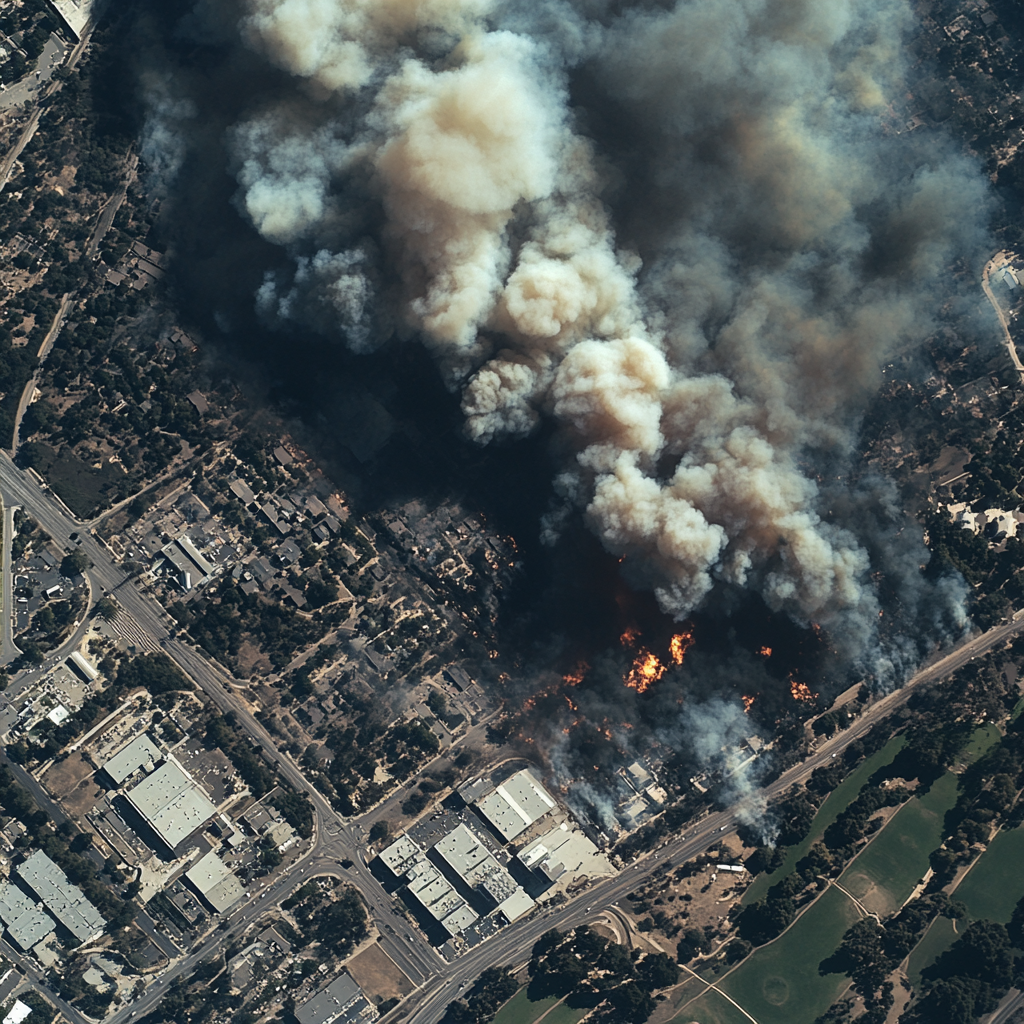
NASA’s JPL Shuts Down Amid Intense LA Wildfires
When the flames roar and nature reminds us of its wild side, it's time for reflection. Enter the early days of January 2025, when the tranquility of NASA's Jet Propulsion Laboratory (JPL) in Pasadena, California, gave way to chaos. The sky turned from sunny blue to smoky gray, as the Eaton Fire, ignited in the Eaton Canyon area near the iconic Mount Wilson, transformed the surrounding landscape into a battlefield, shaking the foundations of science and community alike.
Now, let’s not sugarcoat it. The Jet Propulsion Laboratory is a big deal. For over sixty years, it has been the beating heart of NASA’s quest to unravel the cosmos, designing and engineering anything from planet-roving spacecraft to our brave orbiters. Yet here we are—witnessing a historic institution caught in the fiery grip of nature's wrath. By January 8, JPL had to pull a ‘closed for business’ sign, as the fire danced dangerously close, prompting mandatory evacuations. Just think about it: Scientists working to decode the mysteries of the universe had to trade their telescopes for fire extinguishers and evacuation plans.
As JPL initiated safety measures with the urgency of a launch countdown, operations that usually buzzed with excitement found themselves eerily quiet. Key systems like the Deep Space Network, the backbone of communications with far-flung missions, were swiftly relocated. Only a small cadre of indispensable personnel was allowed on site while the majority settled in for unexpected work-from-home arrangements. Yes, those who usually explore Mars found themselves grappling with another kind of crisis.
Not to forget the brave souls fighting the good fight against the flames, firefighting helicopters were given temporary refuge on the mesa above JPL, although high winds were relentless, making aerial support more like a wish than a reality. Fires and winds are a chaotic duo, but here’s the kicker: the Protective Services Department was glued to their radios, coordinating with the fire emergency command center as if planning a mission to outer space. The firefighters, a legion in their own right, were assisted by the LA County Fire Department, demonstrating that when community faces disaster, the spirit of collaboration rises from the ashes, quite literally.
But hold your applause; let's talk about the human cost. Over 150 employees lost their homes. That’s not just a number—it’s lives uprooted, families displaced, dreams dashed. Areas like Altadena, where many JPL employees had nestled their lives, saw their neighborhoods shredded. Homes, schools, houses of worship—gone. Just like that. The Eaton Fire didn’t just trail destruction; it swept away the very fabric of a community woven together through shared achievements and aspirations at JPL.
Recognizing that they are not just scientists but community members, JPL stepped up, establishing the Caltech/JPL Disaster Relief Fund. Let's be honest, it takes more than rocket engineering to rebuild your life after such a loss. This fund was set up to help those whose lives have been irrevocably altered. So if you have a few bucks to spare, consider sending a little love their way. It’s the least we could do for those who tirelessly quest to expand our horizons beyond Earth’s atmosphere.
Now let’s broaden our lens. The Eaton Fire didn't emerge in isolation; it’s part of a much larger wildfire crisis sweeping through Los Angeles County. Dry conditions, fierce winds—nature’s chaotic cocktail. With 13,690 acres scorched and around 5,000 structures obliterated, the breath of devastation has been expansive. Tens of thousands were ordered to flee their homes, and response teams swelled in numbers as the National Guard charged into the fray, reminiscent of sci-fi worlds where heroes battle against overwhelming odds.
Firefighting crews faced formidable challenges; they dove into a fiery inferno that seemed to possess a life of its own. High winds turned water pressure into a mere trickle, rendering some firefighting efforts all but futile. You have to admire the grit of these first responders, facing chaos with unyielding resolve, intent on protecting landmarks like Mt. Wilson and, naturally, JPL itself. But here’s the sad truth: the Eaton Fire remained uncontained, lurking not just at the gates of NASA innovation but also right in the backyards of those who raised their families in safe, serene suburbs.
It’s a cruel reality, the juxtaposition of scientific advancement and the unpredictable might of nature. The laboratory that has launched humanity to distant worlds now sits humbled, ensnared in a web of flames and smoke. Beyond the scientific ramifications and loss, there’s a poignant reminder embedded here about human fragility and community resilience. As we witness the community pull together in acts of valor, it’s impossible not to recognize the bravery of not only the firefighters but also of those displaced and struggling to navigate this tumult.
When nature strikes, it rattles with a ferocity that brings us not just to our knees but also to the realization that we’re all connected. Whether through scientific inquiry or communal support, it’s in times of crisis that humanity shines.
In conclusion, the shutdown of NASA's Jet Propulsion Laboratory stands as a testament to both the vulnerabilities that come with progression and the robust spirit of a community united. So, if you want to be a part of the solution, consider donating to the Caltech/JPL Disaster Relief Fund—it's more than just charity; it's an investment in those who continuously endeavor to push humanity forward.
In a world where nature's wrath can turn tranquility into turmoil in seconds, it helps to stay informed. For ongoing updates about the impact of natural disasters—not just on the scientific community but on us all—consider connecting with reliable sources of information.
Want to stay up to date with the latest news on neural networks and automation? Subscribe to our Telegram channel: @channel_neirotoken.

